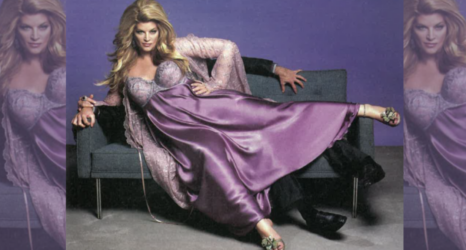When Reema Zaman began writing the book that would become her fierce debut memoir, I Am Yours, she endeavored to assuage the personal pain and despair that emerged from her experiences with intimate partner abuse, sexual violence and anorexia. She thought that becoming the author of her own story would not only clear the path for her own healing, but perhaps provide healing for anyone else who needed it.
The “shared memoir,” in bookstores February 5, embodies a revolutionary act of compassion. Though uncannily timely and resonant in this era of #MeToo and #TimesUp, the lasting grace of I Am Yours resides in her exquisite and lyrical voice, at once tender and searing, that bravely seeks to portray the timeless complexities of the female condition and speak truth to power. Her writing—woven out of threads pulled from her Bangladeshi childhood; her struggles to meet impossible standards of beauty and perfection in her former career as model and actress; her painful wounds carved from emotional abuse and sexual violence; and her courage in reclaiming her life, and voice, as her own—unpacks fraught and complex themes with piercing precision and eloquence.
Zaman has launched her literary career to the sound of widespread critical praise. “I was enthralled by this beautiful book,” Cheryl Strayed, celebrated author of the bestselling memoir Wild, said of I Am Yours, “from the first page to the last.”
The chorus singing praises in anticipation of Zaman’s memoir is a testament to the transformative nature of her story and the aching beauty of her words—and for this installment of the Ms. Q&A, she spoke to another author, Melanie Brooks. Zaman opened up about the journey that became I Am Yours, the power of stories as agents of empathy and who she hopes hears her warrior cry.

The story that fills the pages of I Am Yours of your resolve to liberate your voice from its place of silence resounds with so many of the conversations that are dominating our current and unprecedented cultural narrative. Your courageous and unflinching portrayal of your experiences with sexual assault, an abusive marriage and anorexia are necessary and relevant. Did the themes inherent in this particular cultural moment influence your writing?
This book began as a response to my own spirit, not a cultural movement. I began the writing process in 2013, feeling that very few people would want to read of my experiences with trauma. When I researched agents in 2014, many of them specifically wrote “will not read about terrorism or rape,” so I had to figure out how to write about trauma in a way that could retain the reader’s attention.
In acting, we’re taught the two things that retain attention are comedy and beauty. I knew if I wanted to go deep, I couldn’t use humor as my audience retention. It had to be beauty. I learned to write poetic language because it helps the reader stay inside the pain with me, as I guide them through the dark ocean to reach the other side of healing, closure and strength. Beauty in any form helps soften the cruelty of life.
I started writing the book on November 28, 2013, and I was working on it until October 16, 2018, right up to the moment it went to press. Over these five years, I’ve evolved, society has evolved, so the manuscript evolved. From Trump’s election, to the #MeToo movement, to the Kavanaugh hearings, I’ve returned to the manuscript to become more deliberate and forthright about the political resonances of this personal story, to be more articulate in the topics I explore—healing and rising from sexual assault, navigating intimate partner abuse, understanding the disease that is anorexia and the social constructs that are tied to its roots, understanding patriarchy, understanding how a woman reclaims and uses the power of her voice. I’ve realized that although I didn’t ask for my experiences, I can serve this cultural moment in an impactful way.
In I Am Yours, you allow your readers an intimate look at your process of reclaiming your voice and we become part of your writing journey in a meta way. Was talking about writing your story as you were writing it a conscious choice from the start?
Talking about authoring one’s voice felt like the perfect metaphor for a woman coming to life—especially with my background as an actress where all the words I ever spoke were the ones assigned to me. In my past life, I didn’t feel like a disembodied voice—I felt like a dis-voiced body. The call to action, Only I author my life, is pertinent to us all, but it felt vividly significant for myself, a woman who had been ritually silenced by so many forces.
To reclaim my body and my voice, I had to speak myself into being. It felt logical to parallel the journey of the writing process with my journey into independence. In memoir, there is a penultimate journey, and different memoirs will use different adventures as the spine of that journey. In Eat, Pray, Love it’s a geographic journey—Italy, India, Indonesia—or the Pacific Crest Trail in Wild, another physicalized journey.
I’d already gone through a physical adventure in my first 30 years—through the challenging terrain of Bangladesh, Thailand, New York—and the final act was one of homecoming. Homecoming to my mother and homecoming to my body and my voice. The most powerful homecoming and the most accurate metaphor would be writing this book.
So much of your book’s beauty lies in its form. You shape it as a love letter to yourself—to your ever-present inner voice—and you offer your readers snapshots of pivotal moments in your life’s chronology that both nourished and starved her. Did the writing take that form initially? Were there intentional decisions that you made along the way to develop that structure?
One of the huge accidental benefits for the book and for my voice is that I don’t have any formal training. I had never read a memoir with the intent, “Now I’m going to use this to learn how to structure my own memoir.” The shape of I Am Yours comes from that complete openness of having no preconceived notion of how one should structure a book if one wants to succeed.
I’ve kept a journal since I was 10 yours old, but it wasn’t until I was married that I began to write essays, daily, to make sense of the gaslighting in that relationship. The writing was my inner voice’s survival instinct, the words sent as its last dying gasps to stay alive. In my marriage there was less and less opportunity for me to speak. The more abusive he grew, the more insistently my inner voice began to write, my brain and my soul intuiting that by making sense of what was happening, I’d give myself the nourishment needed to stay alert. The writing gave me the strength to speak back to him, to strategically detach from that life, from that man. Typing those essays gave me self-esteem and a sense of solidarity, even if the solidarity was my voice and I on the page. It was enough. The page and my voice were the only friends I had.
I was 28 when he and I separated. I realized that as my writing had been so crucial in my freedom from him, perhaps, if I developed those words into a book, it could hold power for others. As an actress, to prepare for a role, I’d create a timeline of the pivotal events in a character’s life. This backstory of the character, with quintessential scenes from her childhood and young adulthood, wouldn’t be in the actual play but would inform my portrayal of her.
After my ex-husband and I separated, I mapped the timeline of my own life. Age by age, I went through my entire history, asking: how did I become this woman? On the page, I saw my truth: from girlhood to late twenties, the list of the formative wounds I had encountered in life that resulted in my silence, and the cruelties I had witnessed and sensed happening to other girls and women in my family, in school, on the subway, out in the world. I saw so clearly that the silencing of a person’s voice will result in a splicing between the authentic self and the inner wounded child.
At the bottom of the timeline I wrote: “I won’t be sliced any longer. I need to align.” It was a warrior cry for myself, my refusal to live as a narrative of pain. I realized this was the story I was born to tell: the silencing of a girl, the reclamation of a voice.
I kept that timeline in the final book–it’s the axis on which a woman’s life swings. From there, my daily assignment was to wake up and write, age by age. Today, “I am 3,” and I’d write that section to completion. Tomorrow, “I am 4.” The following day, “I am 5,” and so on. The book developed chronologically; I healed chronologically. I chose that simple, straightforward structure so that any reader can heal along with the narrative—the ages and wounds in their life that are similar to mine.
I wrote I Am Yours for anybody who has gone through something similar, and for people who haven’t gone through a similar experience but want to become more empathic and aware of what happens within that experience, so that we can evolve as a society. Publishing a book is a huge responsibility. The biggest goal and purpose of this book is to provide medicine: a call to action, an invitation of empathy, a healing balm.
You’ve published excerpts of this memoir leading up to its release, you’ve performed publicly some of its scenes, you’ve spoken to different audiences about its themes and content, so you’ve already received feedback from people who are reading or hearing your story and identifying with your circumstances. What have those responses meant to you?
It’s been incredible. I’m feeling a deep sense of connection and sense of place in this world from hearing how my words have been empowering for so many strangers—people who are no longer strangers because once you’ve read my work, we become family. To hear their loving praise gives me such pride and gratitude, and the affirmation that this is precisely what I was born to do. I’m so honored to serve others in their journey into their bravest, boldest self. To speak is a revolution. To know that my voice is now igniting others is the most profound fulfillment.
You are about to send your child into the world with the launch of I Am Yours on February 5th. Can you describe what this moment is like for you?
The metaphor of a book being like one’s child is accurate, but for me, my memoir was also my parent. Writing this book helped me re-parent myself, and it was definitely the thing that kept me alive.
I Am Yours healed my anorexia—which is no small feat—and it gave me a new ability to live without existing inside a slow demise. Releasing this book into the world feels so right because I don’t need it anymore. It doesn’t need me anymore. That’s really beautiful. I’m a grateful, lucky conduit for this book. My job has been to carry it, protect it, give it all the nourishment I possibly can—and now I’m overjoyed to let it travel. It’s been an honor to be its parent and its child, and now I have to let it do the work it’s meant to.
My hope is it arrives in the hands of those who need it—to midwife them through their healing, to hold their hand as they navigate their trauma, to be their embrace through any heartbreak. To be their person in the dark.
That’s one of the final lines, and one of my favorites, in the book: “You have been my person in the dark. Perhaps I have been yours. How lovely that being human soothes the ache of being human.”





